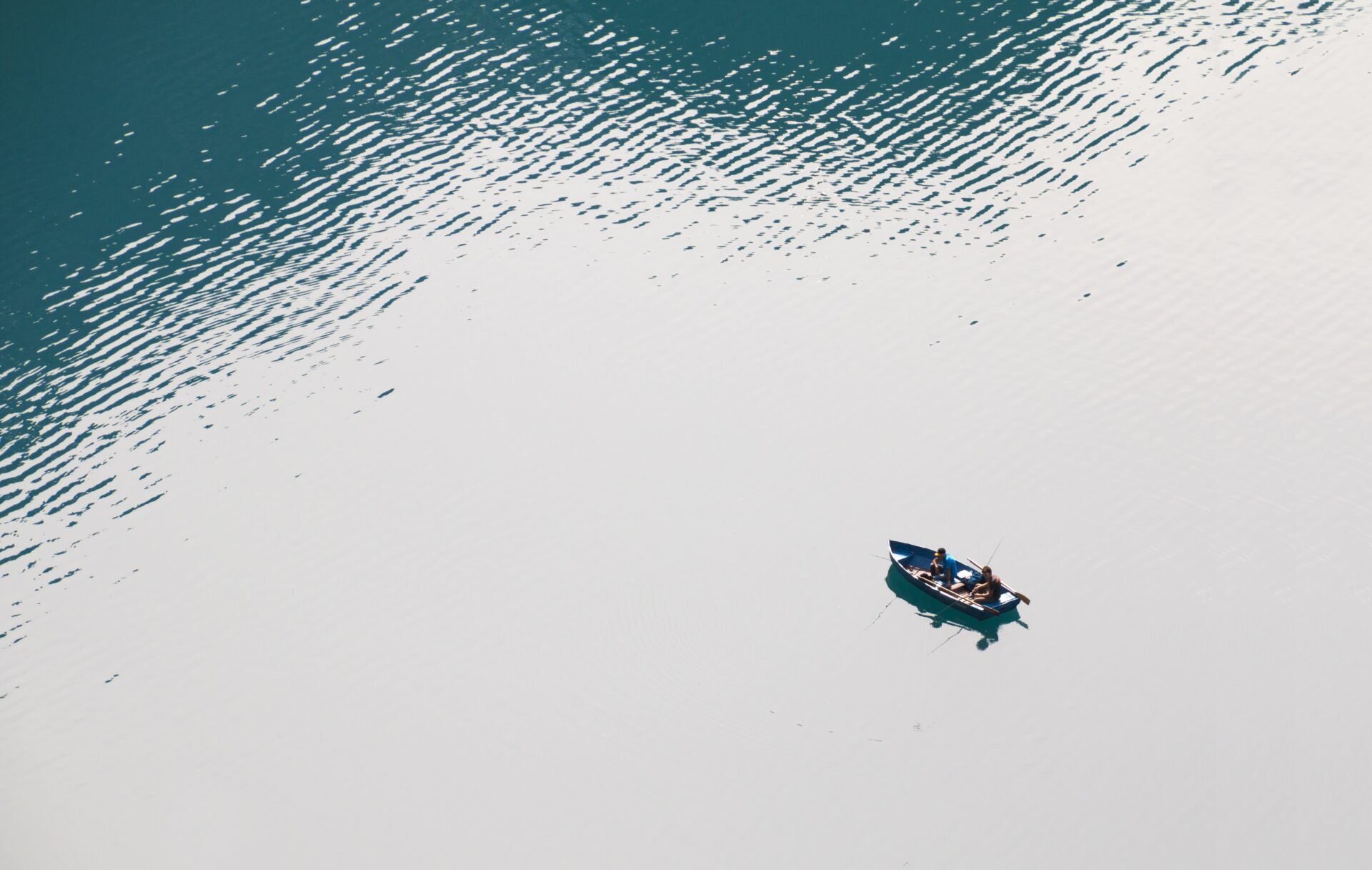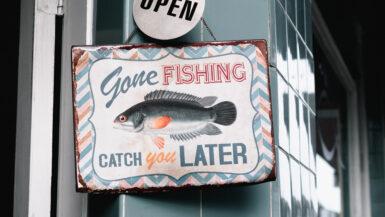Fishing for catfish in moving water provides anglers with challenging and rewarding opportunities. It takes a combination of patience and knowledge of the right techniques to optimize your chances of success. In this article, we will discuss the best tips and tricks for catching catfish in rivers, streams and other bodies of flowing water. You’ll learn the best times and places to fish, the various types of baits to use, and how to identify the signs of active catfish. With the information provided in this article, you’ll be ready to tackle the waters for catfish like an expert!
Choosing the Right Location
Fishing for catfish in moving water requires a deeper understanding of their habits. Catfish like to feed in areas with higher water flow, since it brings more food downstream. They also like areas with deeper waters, as well as areas where the current is slower than normal. It is important to be aware of the water depth and the fish’s preferences when choosing the right fishing spot.
Pick Areas with High Currents
When fishing for catfish in moving water, it is best to pick an area with a strong current. This allows the fish to remain in one spot while they scavenge for food, which makes it easier to catch them. Look for areas where the water is churning or moving quickly; this will indicate that the current is strong. Be sure to pay attention to the depth of the water as well.
Find the Automentum Zones
In moving water, there are certain areas known as automentum zones. These are areas where the water is moving at a slower pace than the rest of the river. For example, eddies and whirlpools are both good spots to look for catfish. They can rest in these spots without having to fight the current and are more likely to be active.
Look for Deeper Waters
When fishing for catfish in moving water, always look for areas with deeper water, as catfish prefer these spots. These places provide a place for the catfish to hide and allow them to take shelter from the current. Pay attention to the water flow in these areas; if the current is too strong, the catfish may be too swept away.
Pick Areas with Structures
Catfish are underneath structures like fallen trees, large rocks, and ledges. These features provide shelter and protection for the fish, so they are less likely to be swept away by the current. Choose areas with these kinds of structures, as they are more likely to hold catfish. You can use a fish-finder to locate these structures and any fish that may be in the vicinity.
Utilize the Proper Tackle
When fishing for catfish in moving water, it is important to have the proper gear. Use a heavy-action rod and reel with a fast retrieval rate, as this will help you control the line and allow you to have more control over your bait. Use a weight that is heavy enough to hold your bait in place against the current. Additionally, use a reliable fishing line and leader that can withstand the strength of the water. With the right equipment, you’ll be able to get the most out of your fishing experience.
Necessary Equipment
Catching catfish in moving waters requires the right tackle and tools. You can find all the necessary equipment for a successful trip to your local sporting goods store. Here is a list of the essential catfishing equipment you’ll need:
Fishing Rod and Reel
The first piece of equipment you’ll need is a suitable fishing rod and reel. Choose a medium to heavy action rod with a reel that can handle a line of at least 10 lbs. The rod should match the size of the fish you’re targeting and be strong enough to handle the current.
Fishing Line
The next item you’ll need is a good quality fishing line. Monofilament fishing line of at least 6 to 10 pounds test is suitable for most catfishing adventures. Try to avoid braided or fluorocarbon lines as they are not as durable as monofilament.
Hooks & Sinkers
You’ll also need some hooks and sinkers when fishing for catfish. Circle hooks and treble hooks are the two most common types of hooks used when fishing for cats. Sinkers will help you keep your bait in place in the strong current.
Bait & Lures
Choosing the right type of bait is essential for catfishing in moving water. Common bait choices include cut bait such as shad, gizzard shad, or cut shad. Live bait like minnows, crawfish, and worms can also be used. It’s also a good idea to bring along a few lures such as crankbaits or jigs in case the cats aren’t biting on the bait.
Additional Supplies
In addition to the essential catfishing gear, you’ll also need some other supplies. These include a net, forceps, and a stringer. You’ll also need some sun protection like a hat, sunglasses, and sunscreen. Don’t forget to bring a cooler for your catch and water for staying hydrated.
Following these tips and bringing the necessary equipment will help ensure a successful and enjoyable catfishing trip. Pack up your gear and head out to your favorite spot and enjoy the challenge of catching catfish in moving waters.
Preparing the Bait
Fishing for catfish in moving water requires some special supplies. You will need the right bait, tackle, and rods to be successful. When gathering supplies, consider size, types, and colors of baits, as well as the size and weight of the tackle and rod. Here are some tips to help you choose the supplies that you need:
Bait
When gathering bait, consider what type of catfish you want to catch. Different catfish species prefer different kinds of bait. Bait should also be chosen based on the size of the catfish. Smaller baits are better for catching smaller species, like channel catfish, while bigger baits are better for capturing larger fish, like blue catfish. Live bait, including crayfish, worms, and minnows, are common choices for catching catfish in moving water.
Tackle and Rods
When choosing tackle, consider the size and strength of the catfish you intend to catch. Smaller tackle is better for catching smaller fish, while bigger tackle is better for catching larger fish. Heavy-duty lines and reels are essential for successful catfishing. Also, choose a rod that is appropriate for the type of fish and size of the bait you are using.
Preparing the Bait
Once you have gathered all the supplies you need, it is important to prepare the bait properly. Live bait should be placed in a sealed container, such as a bait bucket, so that it does not escape. If you are using artificial bait, such as smell-based lures, make sure to check the label for instructions on how to use them. Once you have prepared the bait, you are ready to start fishing for catfish in moving water.
Fishing Strategies for Moving Water
One of the most effective ways to fish for catfish in moving water is by using drifting techniques. Drifting consists of rolling a floating bait across the surface of the water and letting the current gradually move it downstream. This tactic is particularly effective because the bait looks similar to a natural food source and replicates the approach they would take when they feed naturally. You can use a variety of different baits, but it is important to choose one that will stand up to the continually changing current. Popular baits include worms, leeches, or smelly bait fish, like shad.
Using Lures in Moving Water
Lures can also be incredibly effective when fishing for catfish in moving water. The most popular lures for targeting catfish are spinners, jigs, crankbaits, and spinnerbaits. It can be a little tricky to get lures to go exactly where you want them to in moving water, so it is important to choose lures that are designed to be used in fast-flowing water. Additionally, it is important to choose lures that are heavy enough to sink deep into the water. The deeper you can get the lure, the more appealing it is to potential catfish.
Using Natural Baits
Natural baits are also effective when fishing for catfish in moving water. Catfish are scavengers, so they have a tendency to go after a variety of different baits. Some of the most popular natural baits include minnows, crayfish, worms, and leeches. One of the great things about using natural baits is that they do not require additional weights or other special equipment to be used effectively. You can simply cast the bait out and let the current naturally move it downstream.
Incorporating Weight
When fishing for catfish in moving water, it can sometimes be beneficial to incorporate added weights to your line. This will help ensure that the bait is able to get to the bottom of the river or stream where the catfish are likely to be lurking. The weight of the sinker should be directly proportional to the current, with heavier weights being used for faster water and lighter weights being used for slower water. Depending on the current, you may need to use several split-shots to achieve the desired weight.
Baiting Tactics
When it comes to baiting tactics, it is important to remember that catfish can sometimes be finicky. Some catfish may take the bait on the first try, but others may require multiple attempts before they decide to take it. It is important to be patient and wait for the catfish to take the bait rather than just jerk on the line. Additionally, you may want to try using multiple baits on different parts of the river to increase your chances of catching more catfish.
By incorporating these fishing strategies for moving water, anglers can increase their chances of successfully reeling in catfish. With the combination of the right baits and techniques, anyone can catch catfish in a variety of different moving water scenarios.
Safety Considerations
When fishing for catfish in moving water, it is important to dress appropriately for the conditions. Wear clothing that is made of a light, breathable fabric to keep cool and dry. Make sure that the clothing is loose enough to allow freedom of movement while fishing. Aside from proper clothing, you should also look into getting proper gear to complete the job. This includes items such as a fishing rod, reel, line, bait, and a tackle box. Additionally, it is important to have a life jacket, safety whistle, and navigational aids such as a GPS should you plan to be on the water for a long time.
Water Safety and Navigation
It is important to make sure that you are aware of any potential dangers that may exist in the water before starting the fishing process. This could include obstacles such as rocks, logs, and other debris that can potentially threaten your safety. It is also important to be aware of weather conditions and pay attention to the movements of the tides. Additionally, it is important to be familiar with the area’s geography and make sure to have navigational aids that can help you navigate back to shore in the event of an emergency.
General Safety Tips
When fishing for catfish in moving water, it is important to be mindful of potential safety risks. Make sure to go with a friend or two for support and use the buddy system to stay safe on the water. Additionally, be sure to bring a first-aid kit and know basic first-aid techniques in the event of an emergency. It is also important to avoid drinking before or during fishing, as this can impair your judgment and lead to accidents. Lastly, always pay attention to your surroundings and make sure to be aware of your limits.
Tips for Successful Catfish Fishing
The key to successful catfish fishing in moving water is to find an area with a deeper pool of water, where the current from the moving water is slower. In these areas, there will likely be more catfish. To attract the catfish, use bait that moves and mimics food that the catfish would naturally find. This can be live bait, such as worms, or cut bait, such as chicken livers or shrimp. Additionally, if the current is moving too fast, try using a heavier sinker so the bait will stay in place and the catfish will smell it. If all else fails, move to a different area of the water and try again until the fish are biting. With the right knowledge and technique, anglers can successfully catch catfish in moving water.





Leave a reply